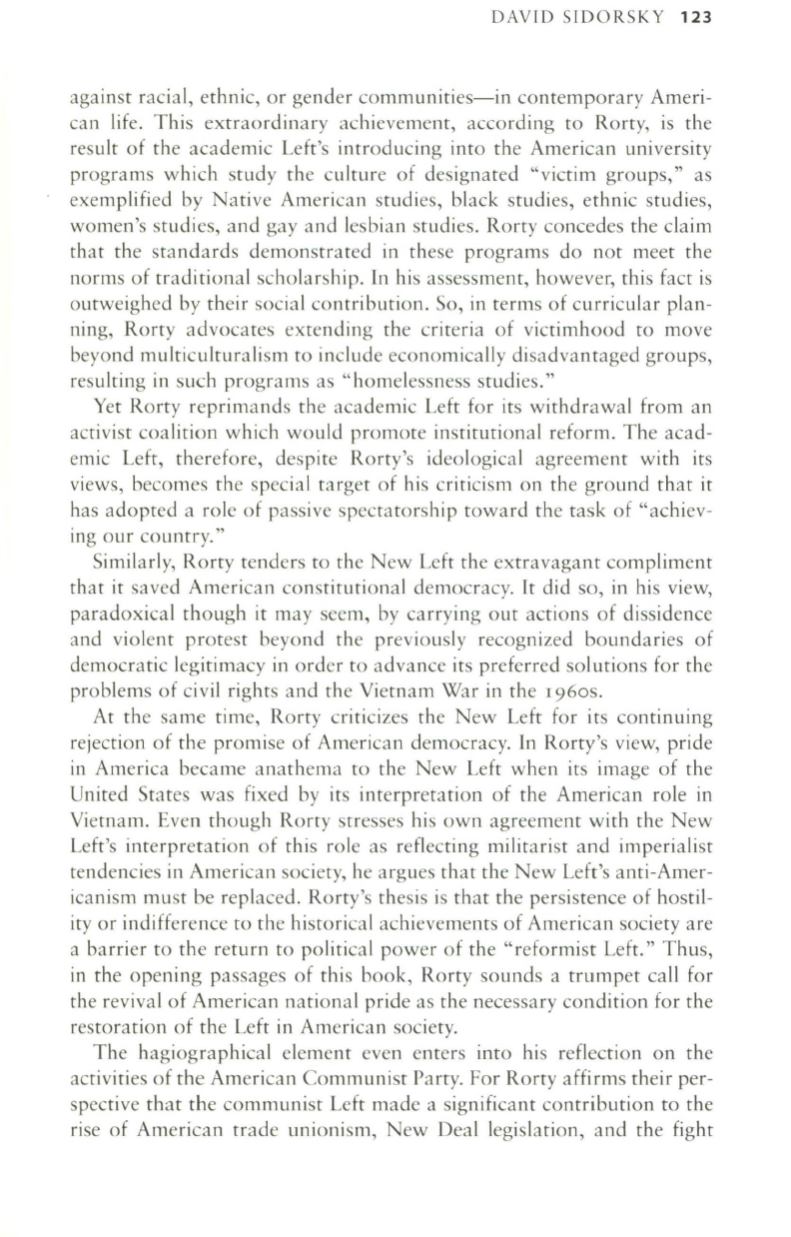
DAVID SIDORSKY
123
against racial, ethnic, or gender communities-in contemporary Ameri–
can life. This extraordinary achievement, according to Rorty, is the
result of the academic Left's introducing into the American university
programs which study the culture of designated "victim groups," as
exemplified by Native American studies, black studies, ethnic studies,
women's studies, and gay and lesbian studies. Rorty concedes the claim
that the standards demonstrated in these programs do not meet the
norms of traditional scholarship. In his assessment, however, this fact is
outweighed by their social contribution. So, in terms of curricular plan–
ning, Rorty advocates extending the criteria of victimhood to move
beyond multiculturalism to include economically disadvantaged groups,
resulting in such programs as "homelessness studies."
Yet Rorty reprimands the academic Left for its withdrawal from an
activist coalition which would promote institutional reform. The acad–
emic Left, therefore, despite Rony's ideological agreement with its
views, becomes the special target of his criticism on the ground that it
has adopted a role of passive spectatorship toward the task of "achiev–
ing our country."
Similarly, Rorty tenders to the New Left the extravagant compliment
that it saved American constitutional democracy. It did so, in his view,
paradoxical though it may seem, by carrying out actions of dissidence
and violent protest beyond the previously recognized boundaries of
democratic legitimacy in order to advance its preferred sol utions for the
problems of civil rights and the Vietnam War in the 1960s.
At the same time, Rorty criticizes the New Left for its continuing
rejection of the promise of American democracy. In Rorty's view, pride
in America became anathema to the New Left when its image of the
United States was fixed by its interpretation of the American role in
Vietnam. Even though Rorty stresses his own agreement with the New
Left's interpretation of this role as reflecting militarist and imperialist
tendencies in American society, he argues that the New Left's anti-Amer–
icanism must be replaced. Rorty's thesis is that the persistence of hostil–
ity or indifference to the historical achievements of American society are
a barrier to the return to political power of the "reformist Left." Thus,
in the opening passages of this book, Rorty sounds a trumpet call for
the revival of American national pride as the necessary condition for the
restoration of the Left in American society.
The hagiographical element even enters into his reflection on the
activities of the American Communist Party. For Rorty affirms their per–
spective that the communist Left made a significant contribution to the
rise of American trade unionism, New Deal legislation, and the fight


